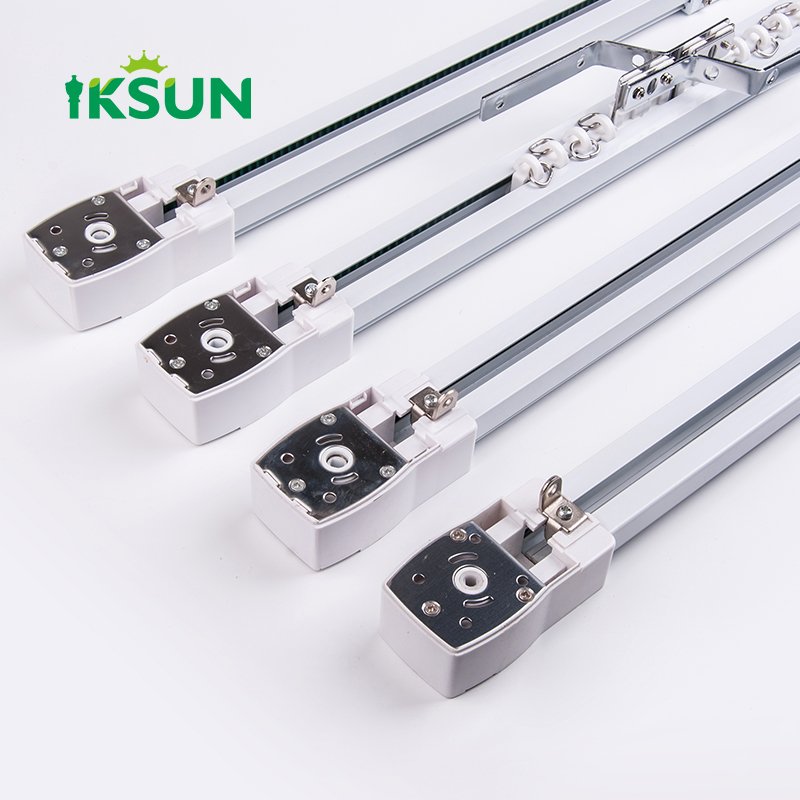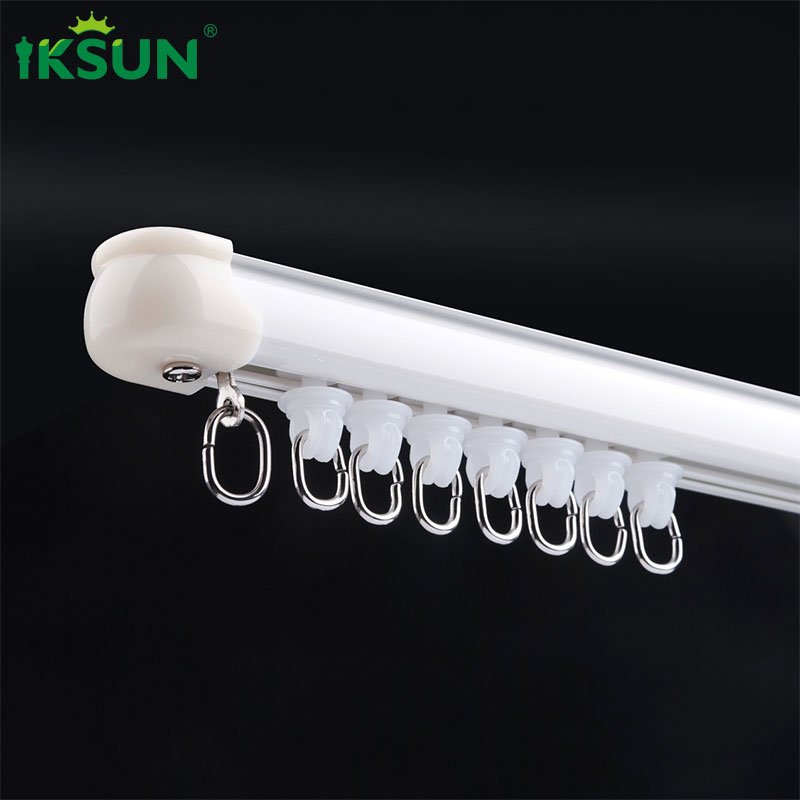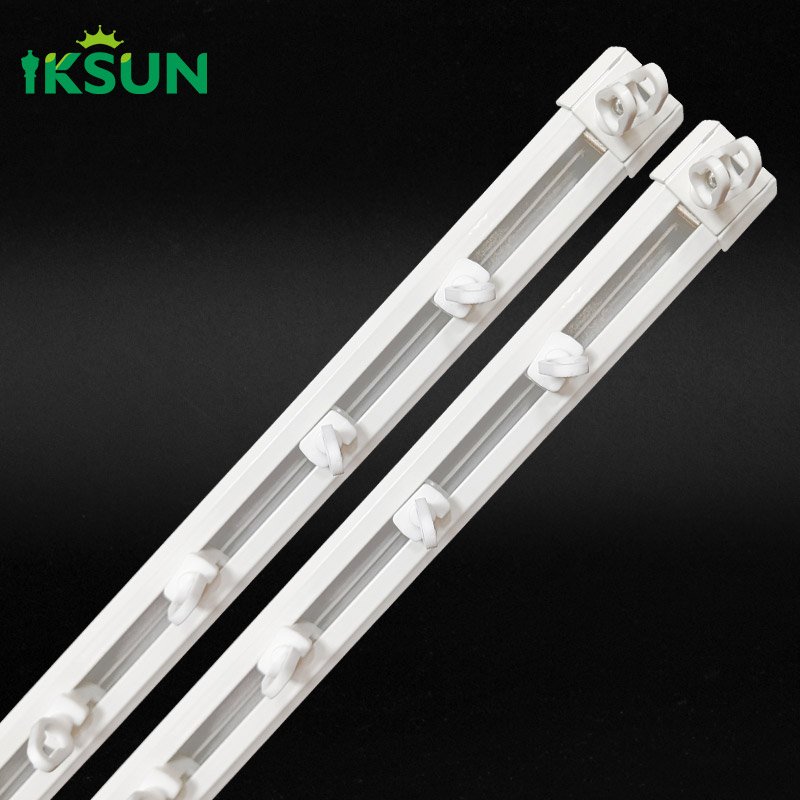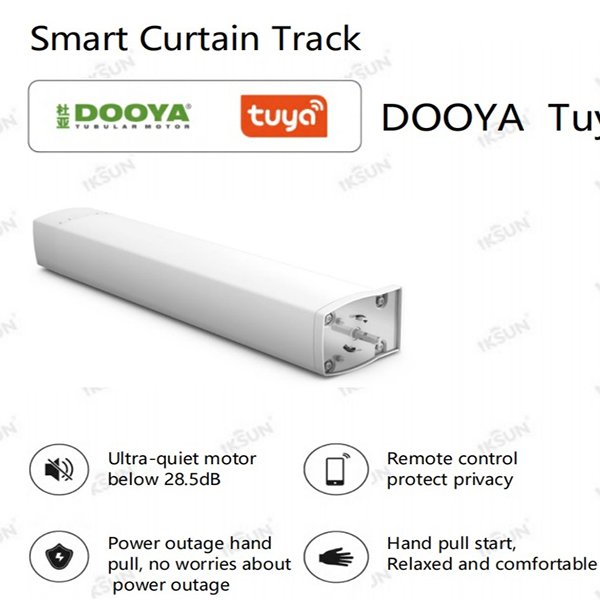With the rapid development of science and technology, the smart home market has also followed the rhythm. As an important part of the smart home system, smart curtains have huge market potential, especially electric curtain tracks and LED curtains, which are gradually becoming the focus of consumer attention. This article aims to deeply analyze the current status, technical characteristics, future development trends, and market opportunities of the smart curtain market and provide a development reference for the domestic smart curtain industry. Through a multi-dimensional discussion of smart curtain technology, we will focus on the innovation and market application of electric curtain tracks and LED curtains, analyze their impact on the global market, and put forward relevant strategic suggestions.
1. Current status of the development of the smart curtain market
The market scale continues to expand
The smart curtain market has experienced rapid growth in recent years. According to statistics, the global smart curtain market reached approximately US$4.4 billion in 2019, and it is expected that this market will reach US$10.3 billion by 2025, with an annual compound growth rate of 16.4%. This shows that smart curtains have gradually transformed from a niche market to an industry with huge potential. In this process, electric curtain tracks and LED curtain technology have become the main driving force for market growth.
Global smart curtain market size in 2019: According to Grand View Research, the size of the global smart curtain market in 2019 is about $4.4 billion (about 30 billion yuan).

Rich product variety
Smart curtain products are of various types, mainly divided into electric curtains, remote-controlled curtains, wireless curtains, etc. Different products have their characteristics in terms of materials, functions, and control methods. For example, electric curtain tracks can support the automatic opening and closing of curtains, and remote-controlled curtains can be conveniently operated through a remote control. LED curtains bring more lighting effects and decorative functions by embedding LED light strips to meet the diverse needs of different users for curtains.
Active technological innovation
Smart curtain companies continue to promote technological innovation, and many new smart curtain products have been launched one after another. For example, the Cordless PowerRise wireless curtain system launched by Lutron in the United States uses wireless technology to achieve remote control of curtains. The German Somfy company launched the TrendControl smart curtain system, which not only has energy-saving functions but also can achieve automatic adjustment of curtains through intelligent technology. Technological innovation continues to promote the expansion of the market and provide consumers with a more intelligent and convenient home experience.

2. Technical characteristics of smart curtains
Intelligent control
The core technology of smart curtains lies in intelligent control. Many smart curtain systems use smart controllers such as single-chip microcomputers and PLCs to achieve functions such as automatic opening and closing of curtains and timer control. Through smartphone apps, voice assistants, and even automated sensors, users can easily control the opening and closing of curtains and can even automatically adjust the position of curtains according to changes in indoor light, temperature, etc., thereby optimizing the indoor environment.
Integrated design
Modern smart curtains often adopt an integrated design and can be linked with other smart home devices. For example, when the indoor temperature is too high, the smart curtain system will automatically close the curtains and start the air conditioning system simultaneously to achieve energy-saving and cooling effects. The integrated design not only improves the user experience but also improves the comfort and energy-saving benefits of home life.
Energy saving and environmental protection
The energy-saving and environmental protection characteristics of smart curtains are a highlight. By automatically adjusting the opening and closing of curtains, the system can effectively control the indoor light and temperature, reducing the energy consumption of air conditioning and lighting. This intelligent adjustment can save energy while creating a more comfortable living environment. According to research data, using smart curtain systems can increase the energy efficiency of homes by about 20%.
Safe and reliable
Safety is a technical feature of smart curtain systems that cannot be ignored. Smart curtains using wireless communication technology can avoid the electrical safety hazards that traditional wiring may bring. At the same time, many smart curtain systems are also designed with lightning protection, overload protection and other functions to ensure the long-term stable operation of the system.

3. Future development trend of the smart curtain market
Technological innovation will lead to future development
Future smart curtain technology will develop in a more intelligent and convenient direction. For example, artificial intelligence (AI) technology will enable curtains to be personalized according to user habits, and the further popularization of Internet of Things technology will enable smart curtains to be more closely linked with other smart home devices. This technological advancement will further improve the quality of life of users and promote the rapid growth of the smart curtain market.
Market demand continues to expand
With the continuous expansion of the smart home market, the application scenarios of smart curtains will continue to expand. From home users to commercial spaces, the demand for smart curtains is gradually expanding to public places such as office buildings, hotels, and shopping malls. According to forecasts, in the next five years, the smart curtain market will usher in more cross-field applications, especially in the growth of demand in commercial and public buildings.
Competition is becoming more intense
As market demand expands, more and more companies are entering the field of smart curtains, and market competition is becoming more intense. In order to stand out, companies must continue to increase their technological research and development efforts, improve product quality, and focus on brand building and after-sales service to meet the changing needs of consumers.

4. Comparative analysis of smart curtain products
To further demonstrate the advantages of smart curtain technology, the following table compares the main features of electric curtain tracks and LED curtains:
| Features | Electric curtain tracks | LED curtains |
|---|---|---|
| Control methods | Remote control, APP, voice assistant | APP control, touch control |
| Functional features | Automatic opening and closing, timing control, and lighting adjustment | Lighting decoration, light adjustment, energy-saving optimization |
| Energy-saving effect | Energy saving is achieved by automatically adjusting the opening and closing of curtains | Energy saving by using LED light sources to improve energy utilization |
| Market price | Mainly in the mid-to-high-end market | The mid-range market is more common and cost-effective |
| Application scenarios | Smart home environments such as the home, office, and hotel | Home, shopping malls, public art installations, etc. |
| Technical innovation | Highly intelligent, supporting multi-platform linkage | Can work with other smart home devices |
5. Summary
Overall, the smart curtain market, especially electric curtain tracks and LED curtains, has broad market prospects and huge potential for technological innovation. With the continuous development of smart home technology, smart curtains will gradually become an indispensable part of home and commercial environments. To stand out in the fierce market competition, companies need to increase technological innovation, improve product quality, and deeply explore the needs of different market segments. At the same time, with the continuous increase in global smart home demand, the popularization of smart curtains will become an important driving force for the development of the global home industry.











